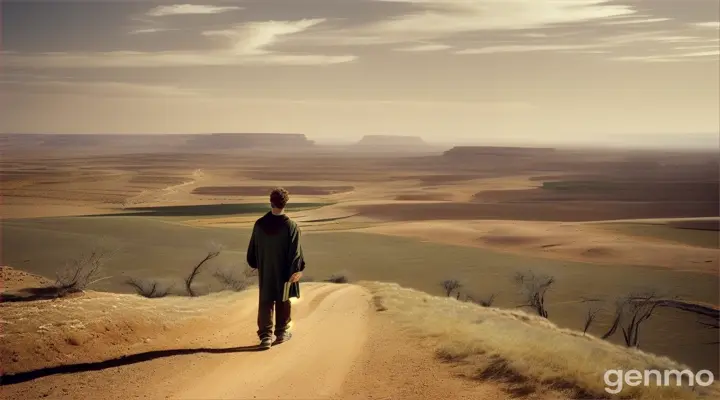
It was then that Elisha saw a solitary figure standing atop a hill, their cloak billowing in the wind. The scene captures the dramatic moment as the storm clouds gather overhead, casting a moody, diffused light across the landscape. The figure is silhouetted against the turbulent sky, creating a striking contrast with the dark, rolling clouds. Their cloak, caught by the gusts, flows dramatically, adding a sense of movement and urgency to the scene. The colors are a mix of deep grays and muted earth tones, with occasional flashes of lightning providing brief, stark illumination. The perspective is slightly low-angle, emphasizing the prominence of the figure on the hill and the vastness of the sky above. The style is reminiscent of the works of Caspar David Friedrich, known for his contemplative and emotive landscapes, combined with the dynamic energy and chiaroscuro of Théodore Géricault's compositions.





































